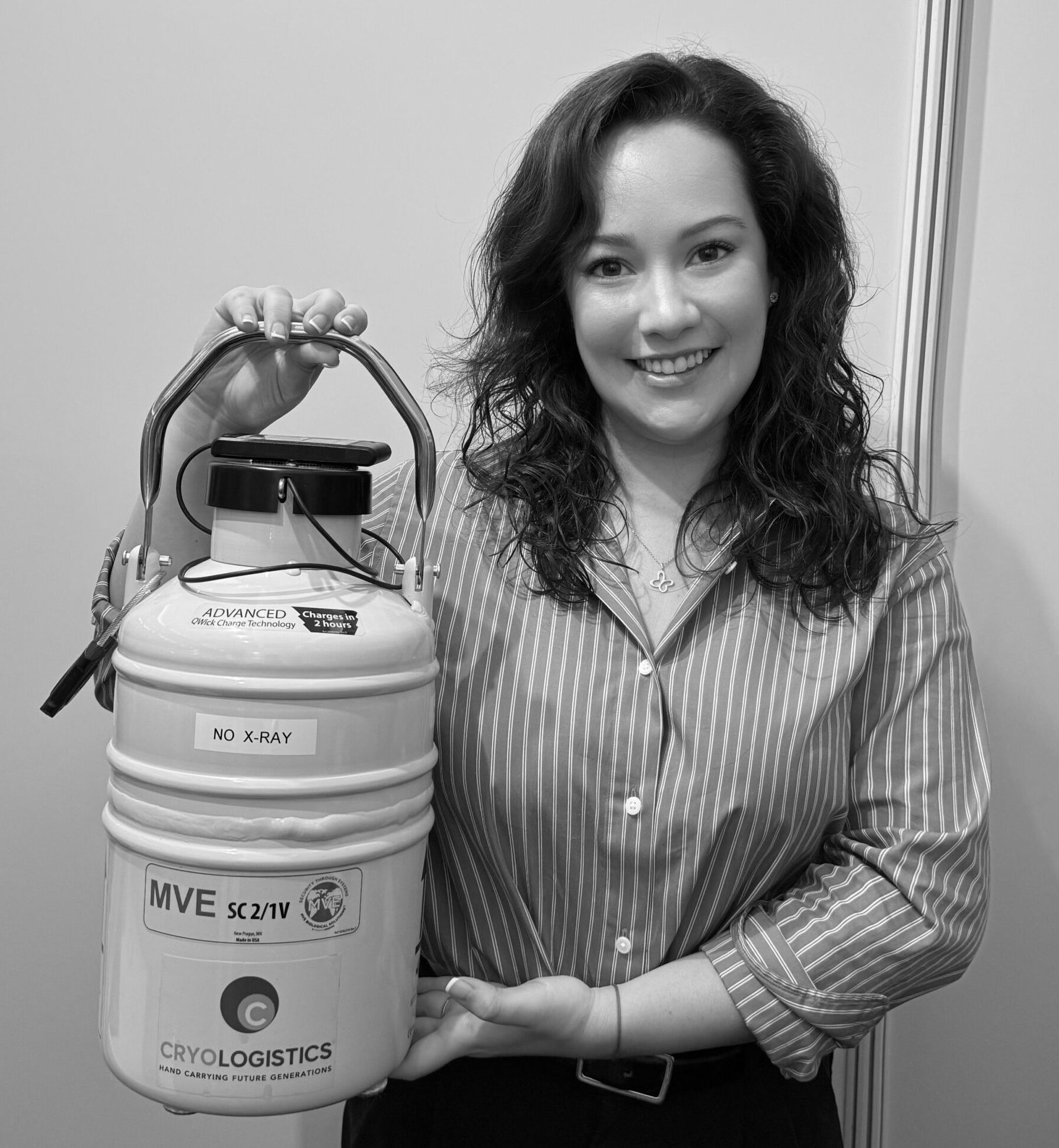
Embryo grading is often one of the most nerve-wracking parts of the IVF journey for hopeful parents.
With so much emphasis placed on your embryo grades, it’s easy to assume a high grade means guaranteed success, while a low grade means failure. However, unlike the grades we receive in school, embryo grading isn’t a straightforward pass or fail – it’s much more nuanced than that.
In this blog, we’ll explore how embryologists assess your embryos, what factors they consider during grading, and debunk some common misconceptions. As a cryogenic transportation company, we work closely with fertility clinics, cryobanks, and intended parents during the IVF process, and we’ve seen it all!
We’ll explain why high grades aren’t guaranteed and how lower-grade embryos can still result in healthy pregnancies. By the end of this blog, you’ll understand what these grades really mean for your IVF journey.
But first, let’s cover the basics of embryo grading…
What is Embryo Grading?

Embryo grading is a benchmark used during IVF to assess the quality and viability of your embryos.
After an egg is fertilized by sperm, embryologists closely observe the developing embryos to determine which ones have the best chance of leading to a successful pregnancy. This evaluation helps them decide the best time to transfer the embryo to the uterus, increasing the likelihood of implantation.
Embryologists typically grade embryos on two key days: day three (cleavage stage) and day five (blastocyst stage).1 During these stages, embryos are at different phases of development, so grading criteria differ.
However, it’s important to remember that embryo grading is subjective and based on visual assessments that don’t always equal higher success (more on that in a minute).
Let’s take a closer look at five common misconceptions about embryo grading that often lead to confusion during the IVF process.
Myth #1: Higher Embryo Grades Guarantee Pregnancy Success

One of the most widespread beliefs intended parents have about embryo grading is that a higher grade equals a greater chance of getting pregnant. While higher-grade embryos are statistically more likely to result in a successful pregnancy, they do not guarantee it. Instead, it’s used to help specialists decide the best approach for transferring or freezing your embryos.
Embryo grading is based solely on the embryo’s appearance under a microscope at two key days:
- Day 3 assesses cell number, fragmentation, and symmetry.
- Day 5 looks at embryo expansion, inner cell mass, and trophectoderm quality.
These features help embryologists determine which embryos are most likely to develop further, but they don’t tell the full story.
A high-grade embryo may still fail to implant, while a lower-grade embryo may result in a healthy pregnancy.
Myth #2: Only High-Grade Embryos Should Be Transferred
A common misunderstanding is that only high-grade embryos should be transferred to the uterus. While it’s true that embryologists prioritize higher-grade embryos when selecting which to transfer, lower-grade embryos are still considered based on individual circumstances.
Embryologists use a range of factors to decide which embryos to transfer, including the patient’s fertility history, age, and the number of embryos available. In many cases, lower-grade embryos are viable options, especially when other factors, such as maternal health or reproductive history, are favorable.
Some clinics may even recommend transferring more than one lower-grade embryo if higher-grade ones aren’t available, increasing the chances of implantation.
The decision ultimately depends on the specific conditions of each IVF cycle.
Myth #3: Embryo Grading Reveals Genetic Health

Another misconception is that embryo grading provides insight into an embryo’s genetic health, but this is not true. Embryo grading is a visual assessment of physical traits, like cell structure and symmetry. But this does not reveal any genetic abnormalities.
To assess genetic health, Pre-implantation Genetic Testing (PGT) is required. The most common type, PGT-A, screens for aneuploidy – embryos with an abnormal number of chromosomes. This can lead to IVF failure, miscarriage, or, in rare cases, conditions like Down syndrome.2 Other types, such as PGT-M, test for specific genetic diseases like cystic fibrosis or sickle cell anemia.
Embryo grading and genetic testing serve two very different purposes in IVF. It’s important to understand a high-grade embryo may still carry genetic or chromosomal abnormalities, while a lower-grade embryo could be genetically normal.
Ultimately, the decision of which embryo to transfer is guided more by genetic results than embryo grade.
Myth #4: Grading Systems Are Universal
Many believe the same embryo grading system is used across all IVF clinics. In reality, grading systems can vary from clinic to clinic. The terminology and criteria for assigning grades may differ depending on the embryologists’ training and protocols.3
For example, some clinics may use different scales for grading fragmentation or symmetry in day three embryos, while others may have different scoring methods for assessing blastocysts on day five. It’s essential to consult with your fertility clinic and understand their specific grading system.
If you’ve had treatment at different clinics, clarify with your fertility team to understand what your embryo grades mean for you.
Myth #5: Embryo Grading Is the Most Important Factor in IVF Success

While embryo grading is an important part of the IVF process, it’s not the only factor that affects the chances of a successful pregnancy. Many other elements come into play:
- The patient’s age
- Health and medical history
- Uterine environment
- Hormonal imbalance
- Stress management
- Advancements in lab technology
- Optimal timing of the embryo transfer
- And much, much more
The grade of an embryo is just one piece of the fertility puzzle.
Ultimately, your embryo’s grade isn’t something you need to stress about on an already delicate journey. But understanding what it means is essential.
Protect Your Precious Cargo

Embryo grading is a helpful tool in IVF, but it is not as black and white as a pass or fail on the successful pregnancy scale. A high embryo grade may increase your chances, but a lower-grade embryo can still result in a healthy, full-term baby.
Beyond embryo grading and genetic testing, it’s crucial to ensure the safety of your cryopreserved embryos if you need to transport them between clinics or to long-term facilities.
At CryoLogistics, our team specializes in the safe handling and transport of your cryopreserved embryos. Our fast, reliable hand-carry cryo transport services protect your precious cargo, no matter the distance, destination, or grade.
Schedule a complimentary call with one of our trusted experts and learn more about how we can support your IVF journey today.
Paragraph
We’re continuously expanding to new countries and reaching more families every day, fulfilling our mission of ensuring no geographical boundary stands in the way of your dreams.
Get the latest in cryo transport and IVF delivered straight to your inbox
Download Your Free Cryo Transport Checklist
Fill in your details to receive the checklist and start planning your cryo transport today!
Thanks!
Please check your email!